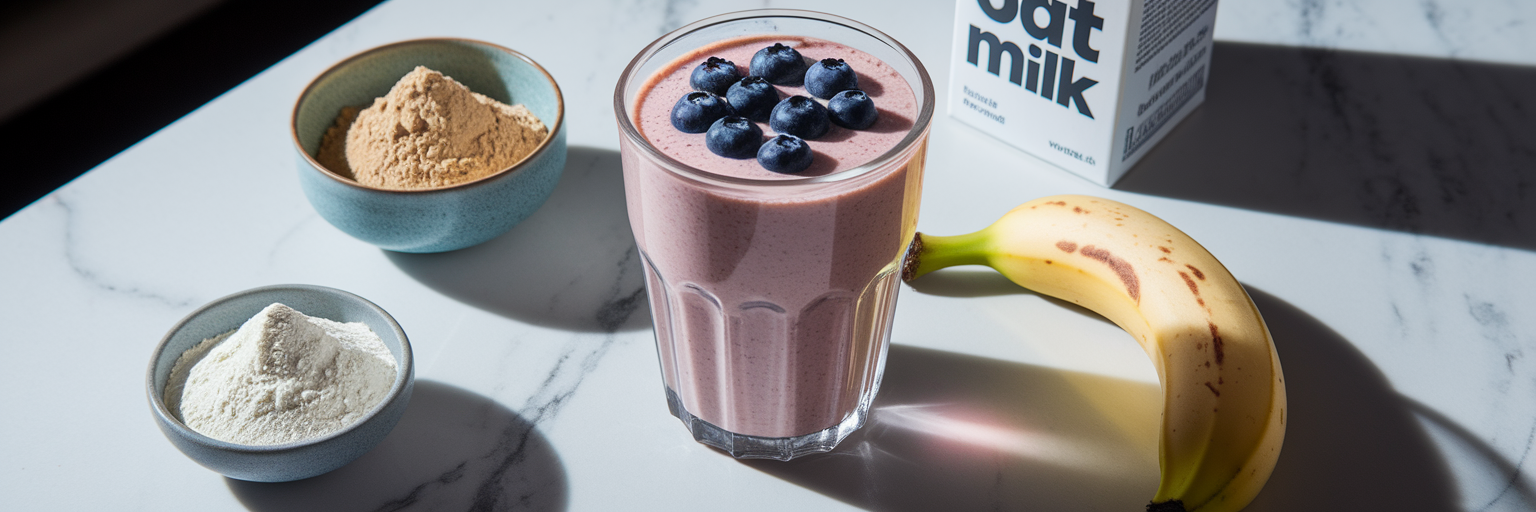Here’s an interesting fact: creatine is naturally found in animal muscle tissue. This means people following plant-based diets typically have lower baseline levels of it in their bodies. While that’s perfectly normal, it also means that supplementing with creatine can offer a particularly noticeable boost to your fitness efforts, helping you push harder and recover smarter.
Why Creatine Is a Game-Changer for Vegan Athletes
So, what exactly is creatine? Think of your muscles having their own energy currency called ATP. During intense, short bursts of activity like lifting a heavy weight or sprinting, your muscles spend this currency very quickly. Creatine’s job is to act like a rapid-recharge station, helping your body quickly replenish that ATP so you can power through your next set with the same intensity.
Now for the most important question: is it vegan? Absolutely. The idea of creatine coming from animal sources is a thing of the past. Modern vegan creatine monohydrate is produced synthetically in a lab using ingredients that are entirely plant-based. To be certain, always look for a "Vegan Certified" label on the packaging. This ensures the product aligns with your values without compromising on quality.
Because of that lower starting point, the performance difference can be quite significant. As highlighted in a recent article by The Guardian, vegans and vegetarians who supplement with creatine often report more substantial improvements in strength and performance. For a deeper look at the science, you can explore the many creatine benefits and see how effective it truly is.
Here’s what you can expect:
- Increased strength and power output
- Enhanced muscle growth potential
- Improved high-intensity exercise capacity
- Faster recovery between sets
Finding Your Ideal Creatine Dose and Staying Hydrated

Once you’ve decided to add creatine to your routine, the next step is figuring out the right amount. The good news is that it’s much simpler than you might think. Forget complicated protocols and focus on consistency.
The Simple and Effective Daily Dose
For the vast majority of people, the most effective and sustainable approach is taking 3-5 grams of creatine monohydrate daily. That’s it. This steady dose is enough to saturate your muscles over a few weeks and maintain optimal levels for ongoing performance benefits. It’s a simple, once-a-day habit that delivers results without any fuss. We recommend a pure, high-quality vegan-certified creatine monohydrate to ensure you're getting the best.
The Loading Phase: Is It Worth It?
You may have heard about a "loading phase," which involves taking around 20 grams of creatine per day for the first week to saturate your muscles faster. While it works, we generally advise against it. This high-dose approach is the primary reason some people experience side effects. If you're worried about creatine bloating vegan diets can sometimes be sensitive to, skipping the loading phase is your best bet. The slow-and-steady 3-5 gram daily dose will get you to the exact same place in about three to four weeks, just without the potential for stomach discomfort.
Hydration: The Key to Making Creatine Work
Creatine works by pulling water into your muscle cells. This is a good thing. It’s part of the process that supports muscle growth and performance. However, it also means your body’s demand for water increases slightly. To support this process and feel your best, make a conscious effort to drink plenty of water throughout the day. Proper hydration helps your body use creatine effectively and prevents issues like cramping.
| Factor | Loading Phase (20g/day for 5-7 days) | Maintenance Dose (3-5g/day) |
|---|---|---|
| Time to Muscle Saturation | ~1 week | ~3-4 weeks |
| Likelihood of Side Effects | Higher (bloating, stomach upset) | Very Low |
| Convenience | Less convenient (multiple doses) | Very convenient (one dose) |
| Long-Term Effectiveness | No difference | Equally effective |
Perfecting Your Timing for Maximum Absorption
One of the most common questions we hear is, "What is the best time to take creatine?" People often debate whether pre-workout or post-workout is better, but the answer is refreshingly simple. While there are some theories about optimal timing, the most important factor by far is consistency.
The popular post-workout theory suggests that pairing creatine with carbohydrates and protein can create a small insulin response, which may help shuttle creatine into your muscles a little more efficiently. It’s a sound theory, but here’s the insight that simplifies everything: consistency trumps perfect timing every single day. As experts featured in Men's Health point out, the real benefits of creatine come from keeping your muscles consistently saturated, and the difference in results from timing is marginal at best.
So, what’s the most practical approach? Find a time that you can stick with. For many, mixing it into a post-workout shake is an easy habit to form. On rest days, simply take it whenever is most convenient, like with your morning smoothie or a glass of water at lunch. Unlike caffeine, creatine’s effects are cumulative, not immediate. You won’t feel a sudden jolt of energy after taking it. The magic happens over time, with daily use. If you have more questions about supplements, you can always check our FAQs page for answers.
Creating the Ultimate Vegan Post-Workout Recovery Shake

Now that you know the what, why, and when, let's put it all together. A post-workout shake is the perfect vehicle for your daily creatine, and creating a delicious, effective one is easy. It all comes down to a simple, powerful combination.
The Power Trio: Creatine, Protein, and Carbs
This combination is your ticket to better recovery. The protein works to repair the muscle fibers you broke down during your workout, the carbohydrates replenish your depleted energy (glycogen) stores, and the creatine gets to work restoring your muscle’s ATP levels for your next session. Combining a high-quality vegan protein with creatine in one shake is a simple and effective recovery strategy.
Choosing Your Vegan Protein and Carb Sources
The best part is that you can customize your shake with ingredients you love. For protein, powders made from pea, soy, or a blend of plant-based sources work wonderfully. For carbohydrates, think natural and nutrient-dense. A banana adds creaminess and potassium, a handful of berries provides antioxidants, and using oat milk as your base adds fiber and extra carbs.
Here is a simple, go-to recipe to get you started:
- 1 scoop of your favorite chocolate vegan protein
- 3-5 grams of creatine monohydrate
- 1 cup of plant-based milk (almond, oat, or soy)
- 1 banana or a handful of mixed berries
Blend it all together and enjoy! For more inspiration, check out some of our other easy vegan protein recipes. What’s your favorite shake combination? Let us know in the comments!
Common Pitfalls and How to Avoid Them
Starting any new supplement can feel a little intimidating, but knowing how to take creatine for vegans correctly is all about avoiding a few common mistakes. Here is a simple guide to ensure you have a great experience from day one.
- Skipping the Unnecessary Loading Phase: We’ve mentioned it before, but it’s worth repeating. The number one cause of stomach issues or bloating is taking too much creatine at once. Stick with the recommended 3-5 grams daily. Your stomach will thank you, and you’ll get the same great results.
- Misunderstanding 'Water Weight': When you hear that creatine causes water retention, remember that it pulls water into your muscles, not under your skin. This is a positive sign that it’s working, making your muscles look fuller and priming them for performance. It’s functional hydration, not unwanted bloating.
- Being Inconsistent: Remember, creatine is not a pre-workout stimulant. Its benefits build up over time. To see results, you must take it daily to keep your muscles saturated. Make it a non-negotiable part of your daily routine, just like drinking water or eating your meals.
- Choosing a Low-Quality Product: Not all creatine is created equal. Look for a product that is pure creatine monohydrate with no unnecessary fillers. Ensure it has been third-party tested for purity and, most importantly, has a clear "Vegan Certified" label. This guarantees you’re getting a high-quality product like our trusted creatine monohydrate that aligns with your lifestyle.


